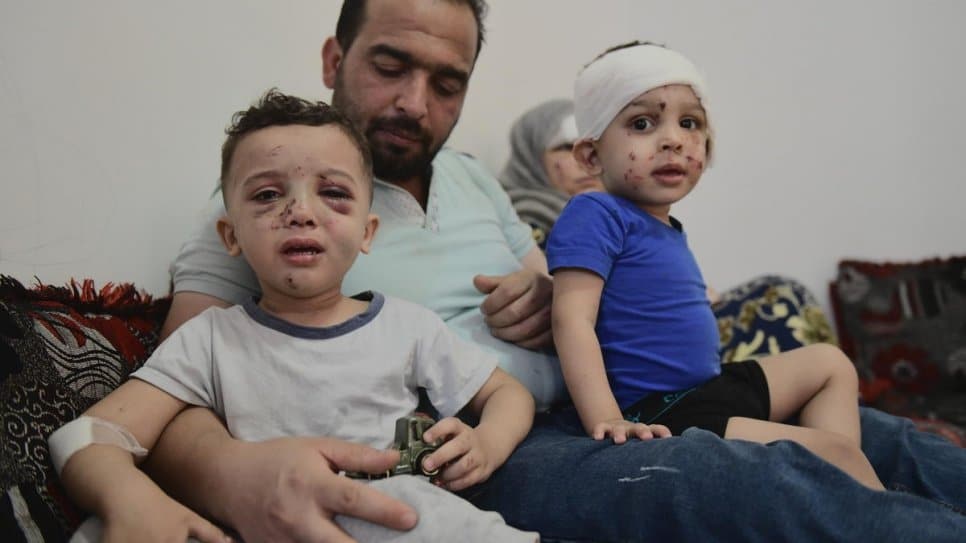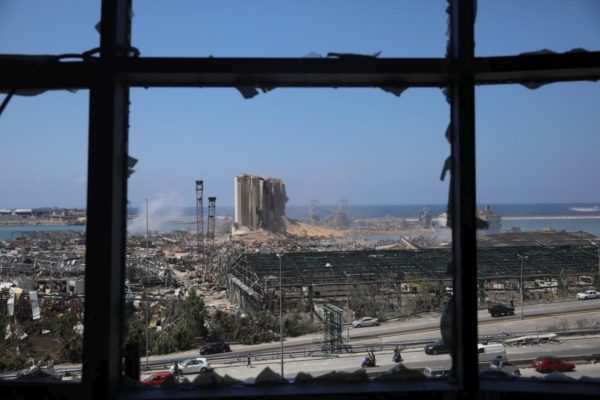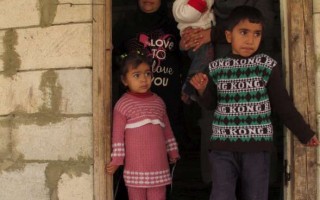
Syrian refugees Ahmed and Aisha Kallout sit on the sofa at a relative’s house in the suburb of Dekwaneh with their sons, Zakariya (in blue) and Yahya. All except Ahmed were injured in the Beirut blast. © UNHCR/Haidar Darwish
Agency channels US$35 million in emergency funds to worst-affected by explosion, focusing on shelter and protection needs among Lebanese, refugees and migrants.
As Lebanon confronts the devastating toll of the explosion that ripped through the heart of the country’s capital on 4 August, UNHCR, the UN Refugee Agency, is directing emergency assistance to those worst-affected by the deadly blast.
The tragedy in Beirut has so far left more than 178 people dead or missing, injured thousands and destroyed or damaged the homes of some 300,000 residents. Given the indiscriminate nature of the destruction, UNHCR is channeling resources and assistance to where they are most needed.
The agency is mobilizing US$35 million for its emergency response to the most vulnerable Lebanese, refugee and migrant households in the capital, focusing on shelter and protection needs over the coming months.
UNHCR’s aid stockpile in the country was not affected by the explosion, and includes shelter kits, blankets, plastic sheeting, mattresses, rub halls and several other critical items that have been made available to the Lebanese Red Cross and other partners on the ground.
“I can’t believe what happened.”
Among those who have already received assistance are 73-year-old Odette Bassil and her husband, a Lebanese couple who live alone in the Geitawi neighbourhood of the city, also close to the blast area.
With all the windows in their home blown out by the explosion, they were given emergency supplies of wood and plastic sheeting to offer some much-needed respite from the elements. “Just yesterday I needed to cover the windows because it rained,” Odette said. “It rained heavily – disaster on top of a disaster.”
Despite having lived through decades of conflict and instability during Lebanon’s turbulent past, Odette said this was the worst experience of her life. “I can’t believe what happened. All the things we have been through, we have never been so terrified, tired and hysterical as we are now, I can’t even sleep.”
The explosion has also claimed the lives of a number of refugees, with 13 confirmed refugee victims so far and 69 still unaccounted for. A further 224 refugees were among the thousands injured.
See also: Beirut blast death toll includes dozens of refugees, emergency response ramps up
The small Middle Eastern nation is one of the world’s largest refugee hosts by share of total population, with more than 900,000 registered refugees from Syria and other countries, in addition to Palestinian refugees, out of a total population of less than 7 million.
Among those injured were the family of Ahmad, a 34-year-old refugee from Al-Hasakah in the north-east of Syria. His wife Aisha and two young sons Yahya, 3, and Zakariya, 2, were in a room of the house in Beirut where Ahmad works as a caretaker when the blast struck.
“All the window and glass fell in on them,” Ahmad said, standing outside the partially collapsed building in the city’s Gemmayzeh neighbourhood, close to the epicentre of the explosion. “I ran towards them. My youngest was badly injured, he was bleeding heavily. (There were) pools of blood.”
As dust billowed over the city in the immediate aftermath of the explosion, Ahmad picked up his injured sons and carried them to the local hospital along with Aisha.
“I went into the street and saw people on cars and on the ground. It was a terrifying thing,” he said. “That moment was beyond imagination. You couldn’t hear anyone from the pressure [of the blast]. You couldn’t hear anything.”
“When we reached [the hospital], the scene was horrific. The injured, the blood – it was something beyond belief,” Ahmad added. Zakariya had two gashes on his head that required 25 stitches, while Yahya had suffered a broken nose, cuts and bruises. Aisha was also left with bruises and a deep cut on her forehead.
The family is now staying in another part of the city with Ahmad’s cousin, whose home was undamaged. As well as the bandages and visible injuries, Ahmad said his sons are still suffering from the psychological impact of that day.
“The children are still in a state of shock,” he said. “They sleep for five minutes, then they wake up scared and terrified. Even food, it took my son three days to eat again.”
“My heart bled when I went down to the street. Everyone outside was covered in blood. You didn’t see anyone unharmed,” Aisha added. “I wish safety to everyone, Lebanese and Syrians.”
“We are working as one to help wounded Beirut.”
With hundreds of thousands of homes damaged or destroyed in the explosion, the scale of the destruction and the required clean-up operation is immense. Many refugees living in Beirut have joined forces with their Lebanese neighbours to begin dealing with the aftermath.
Mohamed Khamees is a Syrian refugee living in the city who joined other refugees and locals in helping to clear debris from homes and streets in Gemmayzeh. He described a sense of unity among all of Beirut’s residents in response to the tragedy, regardless of their origin.
“We saw there was a need for us on the ground, so we all came down, hand-in-hand and united – Syrians, Lebanese and Palestinians – so we can help the people whose houses have been impacted,” said Mohamed, who was part of a group using shovels to clear debris before carrying it away by hand.
“We are working as one to help wounded Beirut. We are standing together, hand-in-hand, to help everyone to lift the dust cloud hanging over our beloved Beirut.”
You can contribute to UNHCR’s relief efforts in Beirut here
Originally published on UNHCR on 16 August 2020





